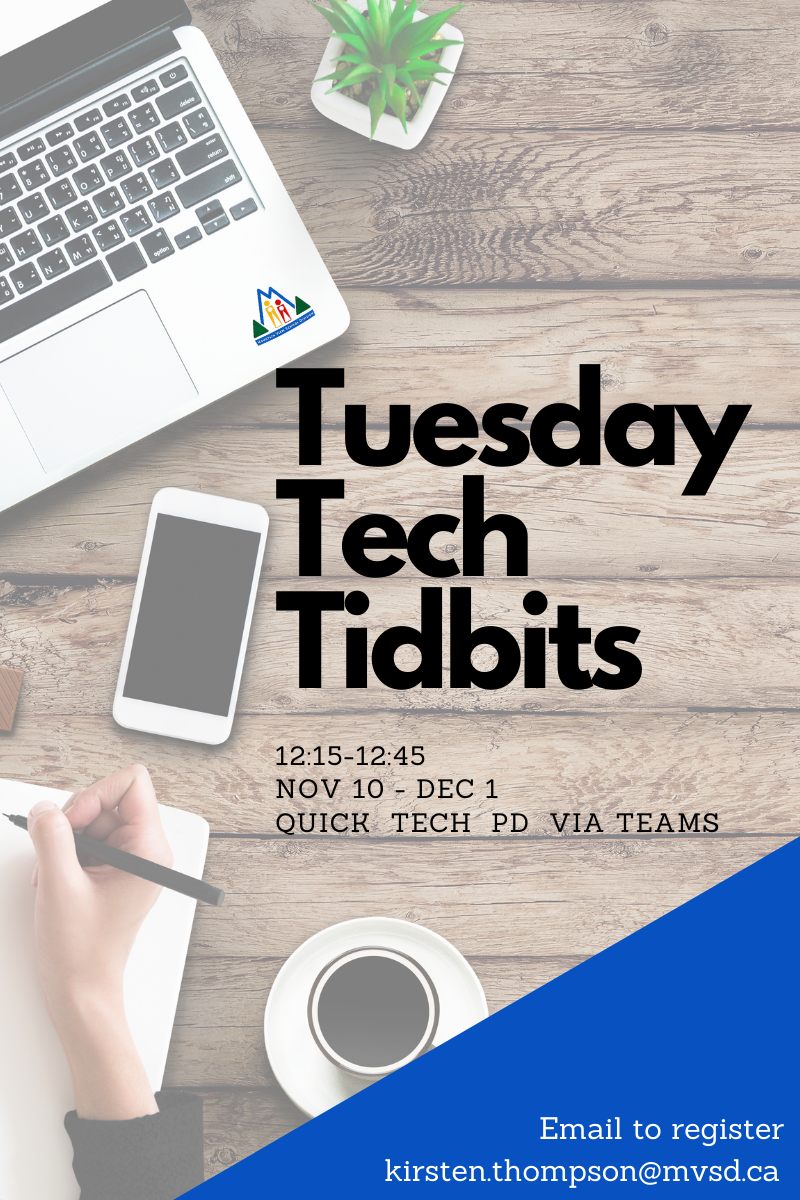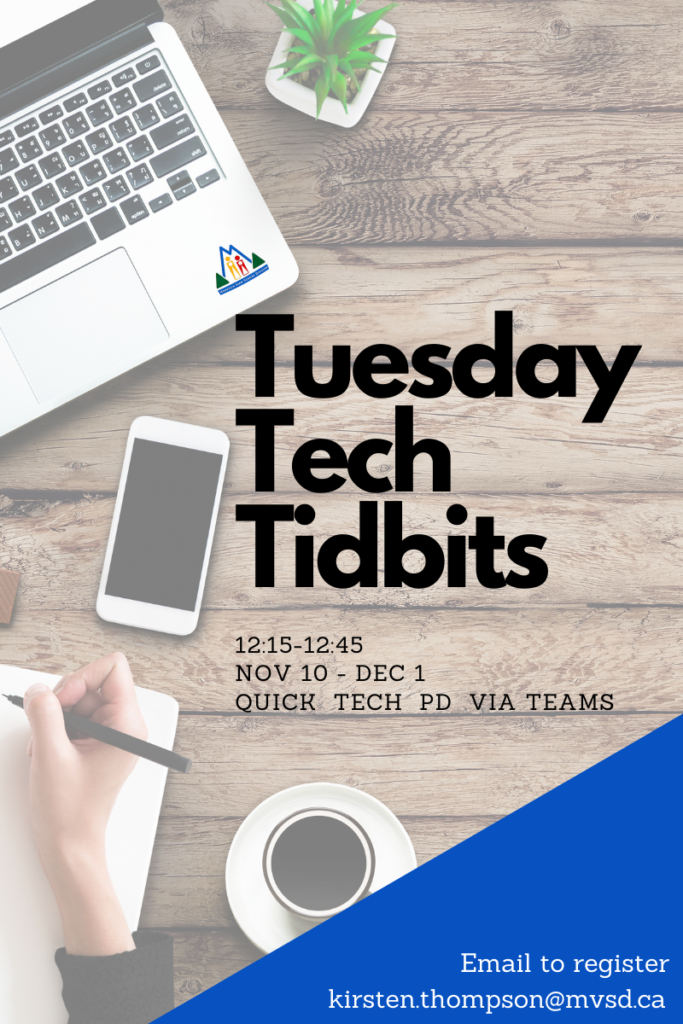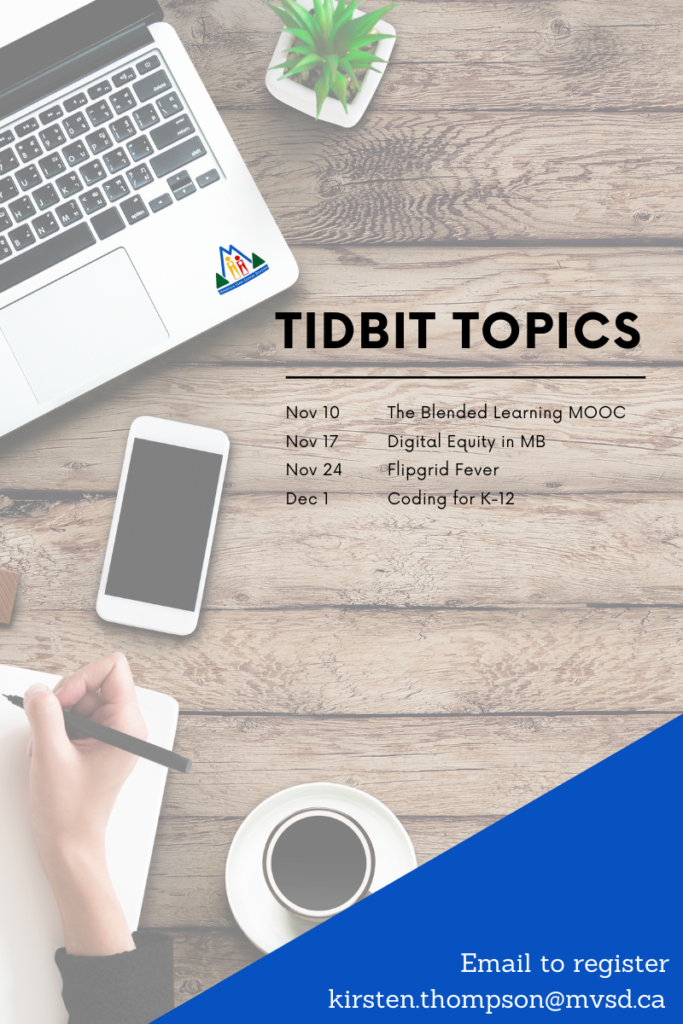Tips for Successful Online Lessons

The Covid-19 pandemic has changed A LOT of things for everyone; coordinators included. To say the adjustment has been easy would be a lie… I’m shared between all 16 of our school buildings and last year I strived to visit every building at least once a month to support teachers, staff, and students with all things ed tech. Sometimes these visits were scheduled appointments but often they consisted of me stationing myself in the libary, common-area, or staff room and developing organic conversations as people saw me. We all know teachers are busy and this method was fantastic because, while they don’t always have time to email me, if they saw me in their building it would spark the moment of, “oh I need….”; which was fantastic! However, in the interest of reduced contacts my visits are now by appointment only and this year is naturally much more busy for educators. As such, my school visits are few and far between (which is why I’ve really tried to amp up my online communication for teachers to review on their own schedule).
This has also had an impact on how I deliver large-scale PD as my monthly schedule that saw staff book time to come to the division office is no longer an option. Bring in: Tuesday Tech Tidbits! These online PD sessions are designed to:
- touch on high interest topics
- be short (30mins)
- not require the availability of a substitute teacher
- be accessible for staff regardless of their building or cohort restrictions
- require zero budget

It is also very important to me that these sessions provide an example to staff on how one might develop content, host a lesson, and build connection in the online space. These sessions have been organized, to the best of my ability, to match what I’ve learned through the Blended Learning Practice MOOC, ISTE Summer Learning Academy, and podcasts such as The Shake Up Learning Show. I am also pulling from my personal experience as an online/remote student to try to incorporate practices condusive to effective online learning. While I strongly recommend taking some time to read back through the posts I linked above, here are some quick tips that I will be incorporating to help model effective online programming for our staff:
- Setting the Stage
- Pre-assess your participants in some way if possible to determine their prior knowledge and goals (email, phone call, survey, assessment activity)
- Provide a short introductory reading, video, etc to briefly introduce the concept
- Welcome to “Class” Routine
- This goes towards establishing your classroom culture and building connections
- Examples may include having a “start of class” routine such as:
- sharing your coffee cup/hat/jewerly item of the day and having your learners share one of their items
- welcome from your pet (if you are at home and have a pet)
- start of class play list (have learners suggest their favourites)
- daily gif check-in using the chat function
- Housekeeping/Platform Overview
- Starting off each learning session with a brief housekeeping session can help provide clarity on the goal of the lesson and assist with management
- Share a brief agenda so learners know what to expect
- Clearly identify if any links, resources, additional details will be emailed out or posted for later review
- this helps learners identify what they need to focus on for personal notes
- Review your classroom norms and expectations towards use of :
- cameras and microphones
- chat/Q & A boxes
- platform features such as “raise hand”, “viewing options” and “breakout rooms”
- Acknowledgement of Your Learners
- Make sure everyone of your learners hears their name during the class
- welcome them by name as they join (whether their video is on or not)
- answer questions using learner names to help facilitate dialogue
- Recognize that your actions may not translate well through a screen so narration can provide context and let learners feel that their participation is being acknowledged
- For example, “I am going to check in on the chat box and review your questions while you’re reading this paragraph”
- Make sure everyone of your learners hears their name during the class
- Accessibility Considerations
- Reminding all learners of accessibility options during your housekeeping session can normalize differences and remind learners of their options
- If your lesson includes shared visuals ensure you build in “alt text” features so your content can be captured by screen readers for those who are visually impaired
- Familiarize yourself with where your platform places closed captions (top or bottom of the screen) and plan your visuals accordingly so that content is not blocked by the use of captions
- If learners are expected to participate in dialogue or activities in other platforms such as social media, back channels, etc it is helpful to include the account handle, hashtag, link or participation code in the footer of each visual
- 5-10-10-5 Pattern of Content (for 30min sessions)
- Pre-class
- This is where you can build in your Welcome To “Class” Routine
- 5-15min before the start of class
- Try to build in learner participation as much as possible
- If your classes are back-to-back you can have class start with an intro slide and playlist which allows you that quick bathroom break/snack/personal time
- 5min
- Housekeeping & platform overview
- Bridge the agenda to the “setting the stage” information you previously sent out
- Encourage small activation in the chat
- 10min
- Large-group instruction
- This is where you share your main lesson
- Try to have a mix of visuals and opportunities for learners to see your face
- 10min
- Application of knowledge by the learners
- This may include:
- breakout room activities/discussions
- group discussion
- learner response in the chat
- activity on an outside platform
- offline activity
- 5min
- Summary of lesson
- Q & A
- Review of ongoing expectations
- Review of how to contact you with questions/concerns
- Pre-class
- Follow-Up
- After the lesson use email or your Learning Management System (LMS) to post the lesson’s resources, links, and any additional details
- “Set the stage” for the next lesson using the formative data you have gathered from your learners during the lesson’s activities and/or any other independent activities
If you’d like to see these tips in action I’d love to have you join in for Tuesday Tech Tidbits! Our schedule will run as follows:

Anyone is welcome to join us! Email me at kirsten.thompson@mvsd.ca to sign up for the session(s) of your choice.
Happy learning!